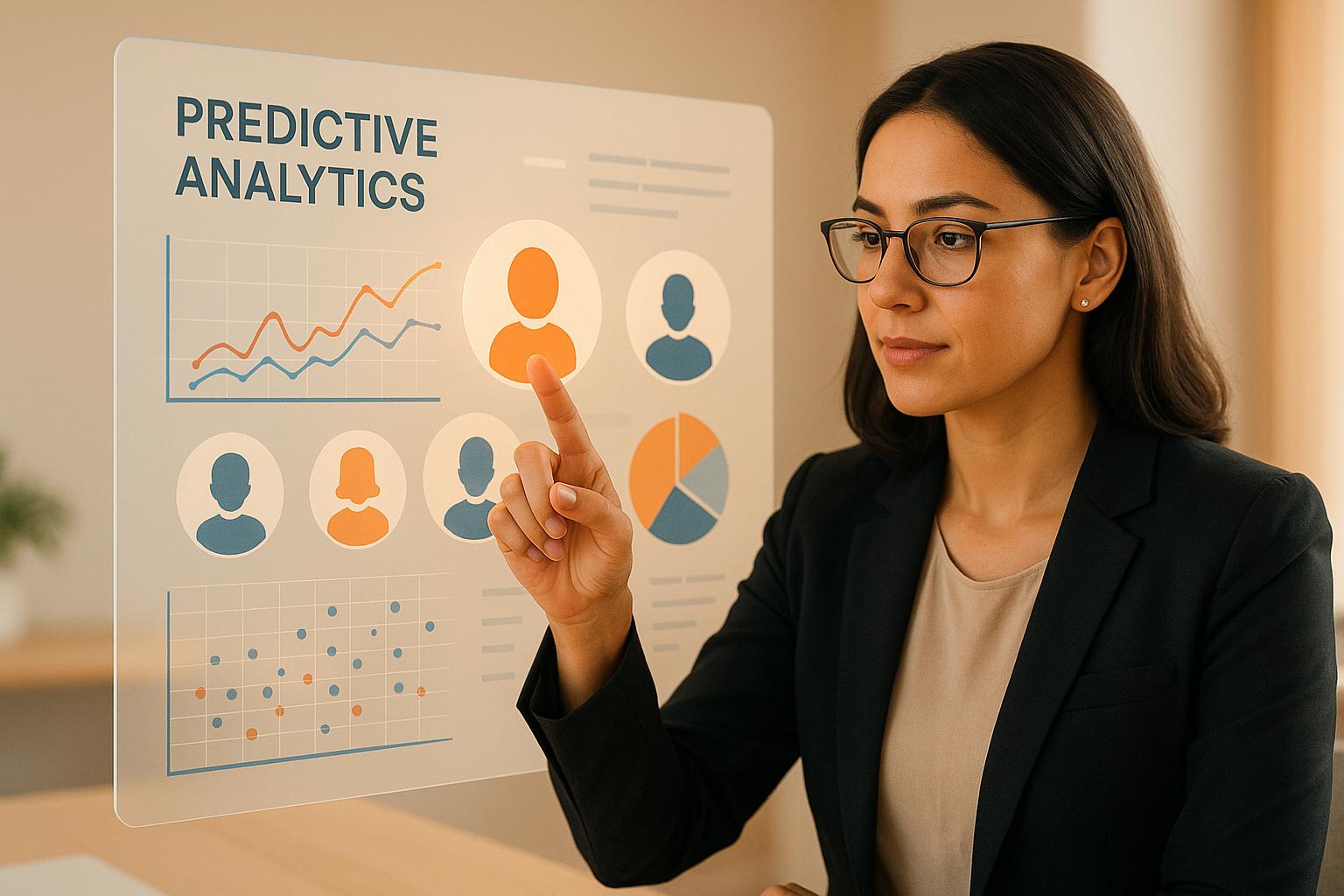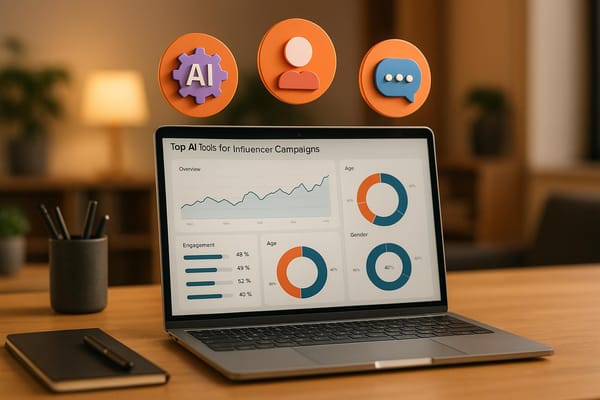AI Scheduling for Influencer Campaigns: Tips and Tools
Explore how AI tools streamline influencer campaign management, enhancing scheduling, compliance, and performance tracking for better results.
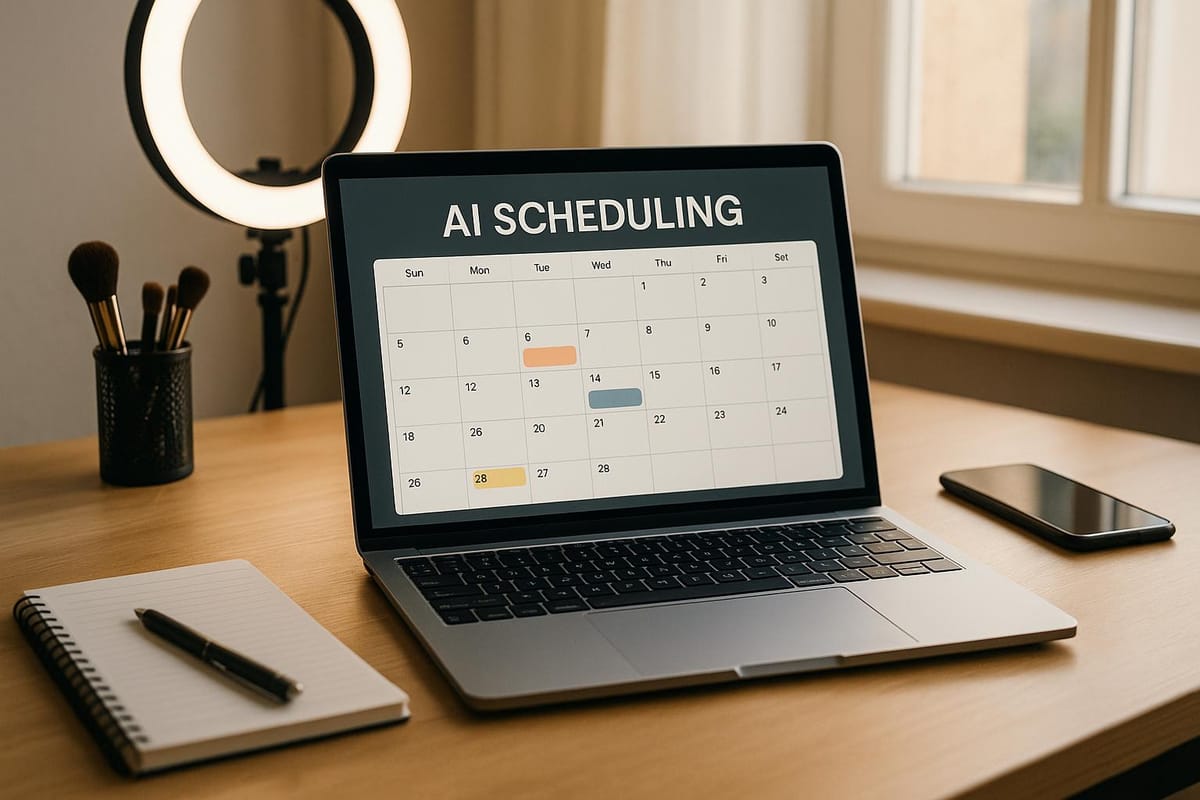
Managing influencer campaigns is easier than ever, thanks to AI tools. These platforms handle repetitive tasks like scheduling posts, tracking deliverables, and ensuring compliance, allowing marketers to focus on creating impactful campaigns.
Here’s what AI can do for you:
- Automated Scheduling: Posts go live at the best times for engagement, even across time zones.
- Influencer Selection: AI analyzes engagement rates, audience demographics, and content style to find the right creators.
- Performance Predictions: Tools forecast campaign results, helping you allocate budgets effectively.
- Compliance Monitoring: AI flags missing disclosures (e.g., #ad) and off-brand content before publishing.
- Cross-Platform Management: Seamlessly coordinate campaigns on Instagram, TikTok, YouTube, and more.
One standout tool is Media AI, which offers a database of over 30,000 influencers and journalists, advanced filtering, and pricing starting at $99/month. AI is transforming influencer marketing by saving time, improving precision, and delivering better results. If you’re managing campaigns in the U.S., these tools are worth exploring.
Get Influencer Content Calender for Free! Ft. impulze.ai #managinginfluencers #influencermarketing
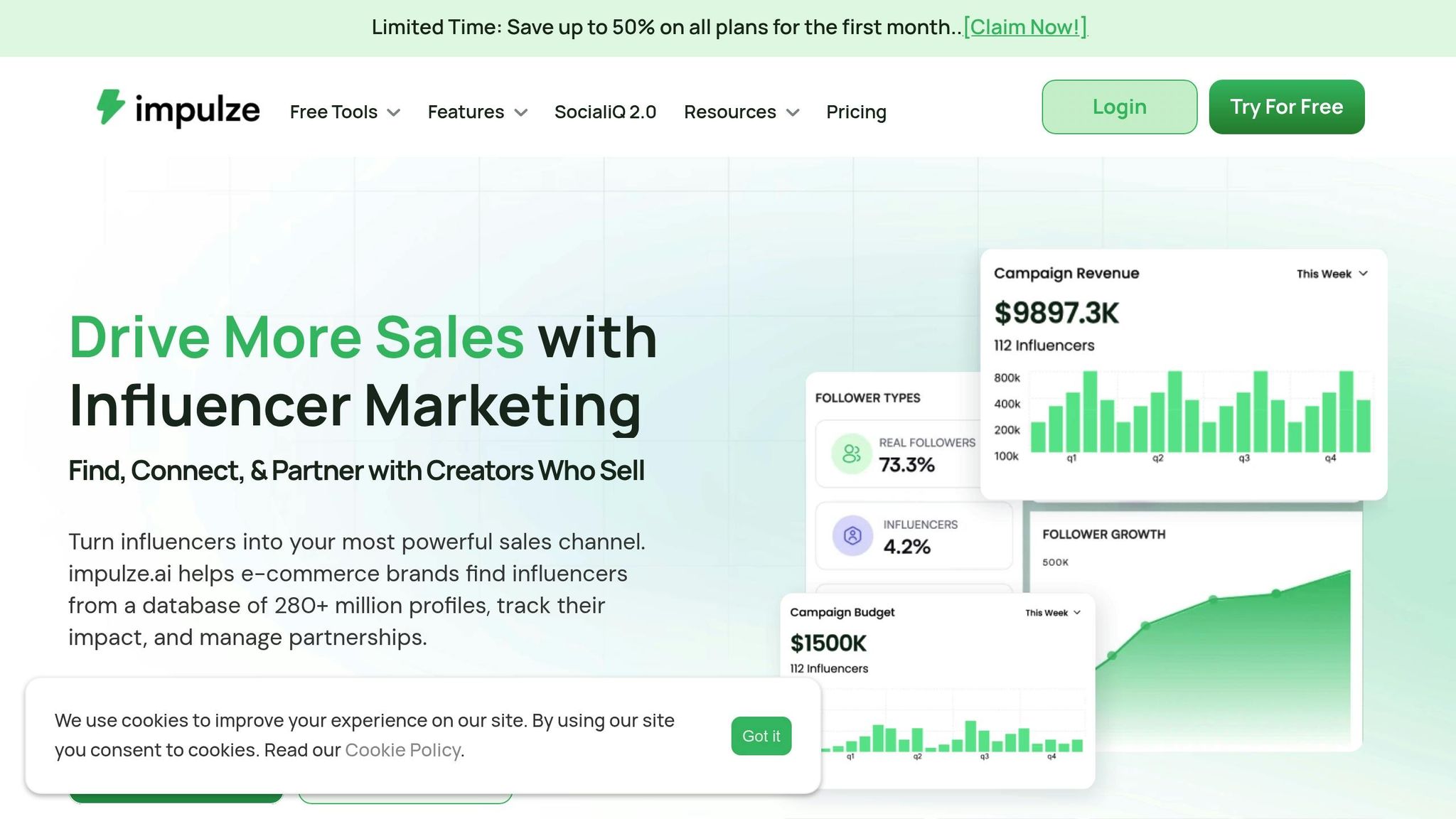
Main Features of AI Tools for Influencer Campaigns
AI tools for influencer campaigns have come a long way. They're no longer just about scheduling posts - they've become powerful platforms that streamline planning, execution, and optimization. By combining machine learning with massive data sets, these tools deliver actionable insights in record time.
Automated Influencer Discovery and Selection
AI tools make finding the right influencers for your campaigns a breeze. They analyze millions of creator profiles across platforms, considering factors like engagement rates, audience demographics, and content quality. This ensures that the influencers align with your brand and target audience.
One standout feature is how these tools evaluate audience overlap. They check if an influencer's followers match your customer base, helping you focus on the right people, not just large numbers. Plus, AI can spot fake followers and inflated engagement metrics, protecting your budget from wasted spending. Real-time checks on posting frequency, authentic interactions, and follower growth add another layer of reliability.
Geographic filtering is another game-changer. For campaigns targeting specific locations, like certain states or cities in the U.S., AI tools identify influencers with followers concentrated in those areas. This makes it easier to connect with local audiences and achieve better market penetration.
The technology also considers how well an influencer’s content style matches your brand. It analyzes visual aesthetics, tone, and topics to ensure the partnership feels natural. This reduces the risk of collaborations that might come across as forced or out of place. Once the right influencers are chosen, AI takes it a step further by predicting campaign performance with remarkable accuracy.
Campaign Performance Predictions
AI tools use predictive analytics to help you allocate your budget more effectively. By analyzing past campaign data, they provide forecasts tailored to your industry, campaign type, and even seasonal trends. This means you can go into a campaign with clear expectations.
These predictions include reach estimates, engagement rates, and conversion potential for different budget levels. AI can even recommend how to distribute your budget, whether it’s better to work with a few high-profile influencers or spread resources across several micro-influencers based on your goals.
ROI forecasting gets more precise as AI factors in external influences like market trends, competitor activity, and even trending topics. It can flag potential risks, like scheduling overlaps with major events or holidays, that might affect your campaign's success.
AI also provides insights into the best-performing content formats for your audience. Whether it’s stories, reels, videos, or static posts, the technology identifies what works best for your objectives. This helps you brief influencers more effectively and set realistic performance goals.
But AI isn’t just about planning - it also plays a key role in managing the execution of your campaigns while keeping everything compliant.
Cross-Platform Management and Compliance Monitoring
Running campaigns across platforms like Instagram, TikTok, and YouTube can be chaotic, but AI tools simplify the process. They sync posting schedules and adapt content to fit each platform’s unique requirements, including optimal timing and formats.
AI also ensures compliance with advertising regulations. For example, it can detect if posts are missing required hashtags like #ad or #sponsored and alert both the brand and the influencer before the content goes live. This proactive approach helps avoid costly mistakes that could harm your brand’s reputation.
Content approval workflows are streamlined, too. AI-powered systems can flag issues like off-brand messaging, inappropriate language, or violations of brand guidelines. Over time, these tools learn your preferences, making the review process even smoother.
On top of that, AI consolidates performance metrics from different platforms, normalizing the data so you can compare results easily. Instead of manually pulling reports from various sources, you get a unified view of your campaign’s success in real-time.
Finally, AI takes care of the nitty-gritty details, like sending automated reminders to influencers about deadlines, content guidelines, and approval updates. This reduces the workload for campaign managers and ensures everything stays on track, even during the busiest periods.
How to Use AI in Influencer Campaign Scheduling
Using AI to streamline your influencer campaigns means setting up workflows that handle repetitive tasks, leaving you free to focus on the creative and strategic aspects. The goal is to create systems that automate the essentials while you concentrate on the bigger picture.
Setting Up Automated Campaign Workflows
The backbone of any AI-driven influencer campaign is a solid automated workflow. Start by defining the core parameters of your campaign - things like target audience demographics, budget limits, content themes, and performance objectives. These inputs give the AI system a clear set of rules to work with.
Next, refine your influencer selection process. Set filters for metrics like follower count, engagement rates, and audience demographics. Automate outreach by using customizable templates that can include personal touches, such as references to recent posts or campaigns. To keep things moving, implement follow-up sequences with varied messaging that trigger automatically if an influencer doesn’t respond within a set timeframe.
Streamline your content approval process as well. AI can flag content that doesn’t align with your brand guidelines while approving posts that meet your criteria. This reduces the time spent on manual reviews without compromising quality.
Finally, automate payment and contract management. Set triggers to release payments once influencers meet specific performance criteria, such as posting content or achieving engagement milestones. For smaller collaborations, payments can be processed immediately after posting, while larger campaigns might use milestone-based payouts tied to metrics like reach or conversions. These automated systems ensure everything runs smoothly while you monitor overall performance.
Using AI Analytics for Performance Tracking
Once workflows are automated, the next step is using AI analytics to track and improve campaign performance. AI tools can sift through raw data to uncover meaningful insights, focusing on quality engagement. For instance, they can distinguish genuine interactions from generic ones, helping you identify influencers who truly connect with their audience.
Sentiment analysis is another powerful tool. AI can evaluate comments and mentions to gauge how audiences feel about your campaign, offering a deeper understanding of their reactions. This lets you fine-tune your messaging on the fly and identify the influencers who consistently generate positive feedback for your brand.
Set up real-time dashboards to monitor key performance indicators (KPIs) across all platforms. Configure alerts for unexpected shifts in engagement or audience sentiment, so you can quickly adjust your strategy if needed.
AI also simplifies attribution tracking. By assigning unique tracking links to each influencer, you can trace the customer journey from the first interaction to the final conversion. This detailed data reveals which partnerships drive brand awareness and which lead to actual sales, helping you allocate your budget more effectively.
Over time, AI systems learn from past campaigns, giving you predictions about future performance and highlighting influencers who are likely to deliver the best return on investment.
Timing Campaigns for US Audiences
With automation and analytics in place, precise scheduling becomes the next priority. AI tools can analyze audience behavior to identify the best times to post, ensuring your content reaches U.S. audiences when they’re most active online. This includes factoring in time zone differences across the country.
For holiday or seasonal campaigns, AI can analyze historical data to determine the most effective launch windows. This ensures your content aligns with consumer behavior during key moments like major holidays or events.
Regional campaigns benefit from even more specific insights. AI can identify local events, school calendars, or even weather patterns that might impact engagement. This allows you to tailor your timing to resonate with specific communities.
Incorporating cultural trends can also boost your campaign’s relevance. AI tools can monitor emerging trends or significant cultural moments, giving you the flexibility to adjust your content strategy in real time.
Finally, AI scheduling takes the headache out of managing time zone differences. By automating this process, your content will always go live at the optimal time for your audience. Regular testing and adjustments to your scheduling strategy will help you refine and improve performance over time.
Top AI Tools for Influencer Campaign Management
When it comes to managing influencer campaigns, leveraging AI tools can make all the difference. These tools simplify scheduling, streamline analytics, and help you coordinate campaigns across multiple platforms. For marketers and PR professionals working with U.S. audiences, having a reliable tool to handle these tasks is a game-changer.
One standout option is Media AI, a platform that combines discovery, scheduling, and data export into one cohesive solution.
Media AI: A Comprehensive Platform
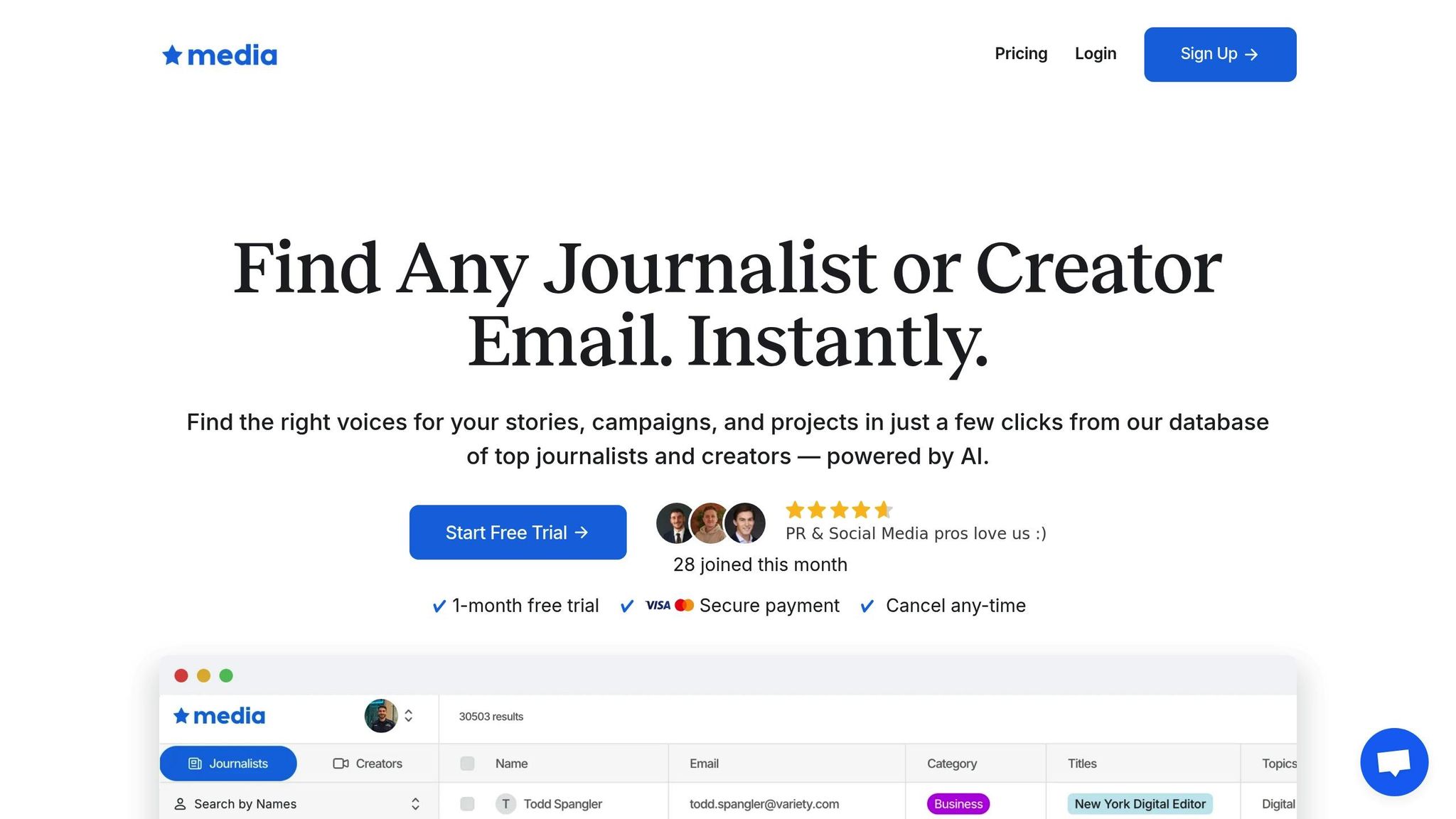
Media AI is a powerful platform equipped with a curated database of over 30,000 journalists and creators. Its advanced filtering capabilities allow you to refine searches based on demographics, engagement metrics, follower count, content category, and even location. This ensures you connect with influencers and creators who align perfectly with your brand's goals and values.
The platform also takes the hassle out of data management. With its seamless export feature, you can easily transfer contact details into your CRM or email marketing tool - no manual data entry required. Pricing is straightforward and flexible:
- Journalist Database: $99/month
- Creators Database: $99/month
- Full Database (journalists and creators): $149/month
All plans include unlimited searches, advanced filtering, and export functionality, with no long-term contracts.
AI Tools at a Glance
Here’s a quick breakdown of Media AI’s key features:
| Feature | Details |
|---|---|
| Database Size | 30,000+ contacts |
| Key AI Features | Advanced filtering & easy export |
| Pricing | $99/month to $149/month |
| Best For | PR professionals, agencies, startups |
Media AI strikes a great balance between functionality, affordability, and ease of use, making it a solid choice for managing influencer campaigns effectively.
How to Improve AI-Driven Influencer Campaigns
Take your campaigns to the next level by leveraging AI-driven personalization. By analyzing customer data - like browsing habits, purchase trends, and engagement metrics - you can tailor messages that align with audience preferences, making your campaigns more effective and engaging. Combine these insights with automated workflows to streamline processes and maximize results.
Conclusion
AI scheduling tools are reshaping how PR professionals and marketers handle influencer campaigns in the US. These tools streamline tasks like finding influencers, predicting campaign outcomes, and ensuring compliance across platforms. The result? Less time spent on manual work and more measurable outcomes.
This shift toward automation allows for more strategic focus. By using AI to optimize timing, your content can hit US audiences at the moments they’re most likely to engage.
Take Media AI as an example. It provides access to a database of over 30,000 journalists and creators, along with advanced filtering and export options. Plus, its flexible pricing means you’re not tied down by long-term contracts - perfect for today’s fast-paced campaigns.
The real challenge is blending AI-driven personalization with genuine authenticity. As AI tools grow more advanced and customer data becomes richer, brands that adapt quickly will see improved efficiency and stronger campaign results.
Now’s the time to embrace AI scheduling tools. They’re the key to staying competitive, building authentic connections, and driving sustained success in the ever-evolving US influencer marketing space.
FAQs
How does AI help ensure influencer campaigns follow advertising regulations?
AI is a game-changer when it comes to keeping influencer campaigns in line with advertising rules, especially by emphasizing transparency and proper disclosure. It can automatically spot when content is sponsored or created using AI and prompt influencers or brands to include clear disclaimers. This ensures compliance with FTC guidelines, like disclosing paid partnerships or the use of AI in content creation.
On top of that, AI tools actively monitor campaign content in real time, flagging issues like misleading statements or missing disclosures before they become a problem. By keeping up with changes in advertising laws, these tools not only help brands avoid legal troubles but also play a big role in maintaining consumer trust.
How does AI choose the best influencers for a marketing campaign?
AI takes a close look at several factors to find the best influencers for your campaign. These include audience demographics like age, location, and interests, as well as engagement metrics such as likes, comments, and shares. It also considers content relevance to ensure the influencer’s posts align well with your brand’s message.
Beyond that, the process evaluates the influencer’s authenticity, reach, and track record - specifically their past success in driving results for similar campaigns. By analyzing all these data points, AI simplifies the selection process and ensures your campaign connects with the right audience.
How can AI tools help schedule influencer posts to boost engagement with U.S. audiences?
AI tools can help fine-tune the timing of influencer posts by analyzing patterns in audience behavior and past engagement trends. Through machine learning, these tools pinpoint the times when your target audience is most active, allowing you to schedule posts for the best visibility and interaction.
For U.S. audiences, these platforms often suggest posting during peak hours, like weekdays from 11:00 AM to 2:00 PM. Some advanced tools even offer real-time recommendations based on how previous campaigns performed, giving marketers the chance to adjust their strategies on the fly. Using these insights, brands can boost their reach and connect more effectively with their target audience.


